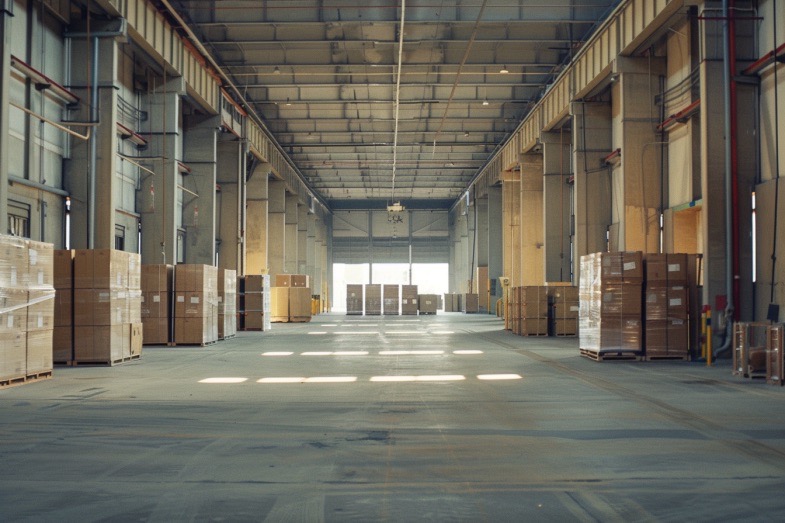India Deports Rohingya Refugees to Myanmar Amid Civil War
DELHI — Noorul Amin last spoke to his brother on 9 May. The call was brief, but the news was devastating.
He learned that his brother, Kairul, and four other relatives were among 40 Rohingya refugees allegedly deported by the Indian government to Myanmar, a country they had fled in fear years ago.
Myanmar is in the midst of a brutal civil war between the junta — which seized power in a 2021 coup — and ethnic militias and resistance forces.
The odds that Mr Amin will ever see his family again are vanishingly small.
“I could not process the torment that my parents and the others who were taken are facing,” Mr Amin, 24, told the BBC in Delhi.
Three months after they were removed from India’s capital, the BBC managed to contact the refugees in Myanmar. Most are staying with the Ba Htoo Army (BHA), a resistance group fighting the military in the south-west of the country.
“We don’t feel secure in Myanmar. This place is a complete war zone,” said Soyed Noor on a video call made from the phone of a BHA member. He spoke from a wooden shelter with six other refugees around him.
The BBC gathered testimonies from the refugees and accounts from relatives in Delhi and spoke to experts investigating the allegations to piece together what happened to them.
We have learnt that they were flown from Delhi to an island in the Bay of Bengal, put on a naval vessel and eventually forced into the Andaman Sea with life jackets. They then made their way to shore and are now facing an uncertain future in Myanmar, which the mostly-Muslim Rohingya community had fled in huge numbers in recent years to escape persecution.
“They bound our hands, covered our faces and brought us like captives [on to the boat]. Then they threw us in the sea,” John, one of the men in the group, told his brother by phone soon after reaching land.
“How can someone just throw human beings into the sea?” asked Mr Amin. “There is humanity alive in the world but I have not seen any humanity in the Indian government.”
A map titled “How the refugees were removed from India” illustrating a four-step journey: refugees were first put on planes in Delhi, then flown southeast to the Andaman and Nicobar Islands, taken east across the sea by boat and finally told to jump into the water off the coast of Myanmar.
Thomas Andrews, the UN’s special rapporteur on the situation of human rights in Myanmar, says there is “significant evidence” proving these allegations, which he has presented to India’s head of mission in Geneva but has yet to receive a response.
The BBC has also contacted India’s Ministry of External Affairs several times but had not heard back by time of publication.
Campaigners have often flagged that the condition of Rohingya in India is precarious. India does not recognise the Rohingya as refugees but rather, as illegal immigrants under the country’s Foreigners Act.
India has a sizeable population of Rohingya refugees, although Bangladesh, where more than a million live, has the biggest number. Most fled Myanmar after a deadly army crackdown in 2017. Despite having lived there for generations, Rohingya are not recognised in Myanmar as citizens.
There are 23,800 Rohingya refugees in India registered with the UNHCR, the UN’s refugee agency. But Human Rights Watch estimates that the actual number is upwards of 40,000.
On 6 May the 40 Rohingya refugees, who had UNHCR refugee cards and lived in different parts of Delhi, were taken to their local police stations under the guise of collecting biometric data. This is a yearly process mandated by the Indian government where Rohingya refugees are photographed and fingerprinted. After several hours they were taken to the Inderlok Detention Centre in the city, they told the BBC.
Mr Amin says his brother called him then and told him he was being taken to Myanmar, and asked him to get a lawyer and alert the UNHCR.
On 7 May, the refugees said they were taken to Hindon airport, just east of Delhi, where they boarded planes to the Andaman and Nicobar Islands, an Indian territory in the Bay of Bengal.
“After getting off the plane, we saw that two buses had come to receive us,” said Mr Noor on the video call. He added he could see the words “Bhartiya Nausena” written on the side of the buses, the Hindi term referring to the Indian Navy.
“As soon as we got to the bus, they bound our hands with some plastic material and covered our face with a black muslin cloth,” he said.
Although the people on the buses did not identify themselves, they were dressed in military fatigues and were speaking Hindi.
After a short bus ride, the group boarded a naval vessel in the Bay of Bengal, which Mr Noor said they only realised later once their hands had been untied and their faces uncovered.
They describe the vessel as a large warship with two floors, at least 150m (490 feet) in length.
“Many of [the people on the ship] were wearing T-shirts, black-coloured trousers and black army boots,” said Mohammad Sajjad, who was on the call with Mr Noor. “They weren’t all wearing the same thing — some in black, some in brown.”
Mr Noor says that the group was on the naval vessel for 14 hours. They were given meals regularly, traditional Indian fare of rice, lentils and paneer (cheese).
Some of the men say they were subjected to violence and humiliation on the ship.
“We were treated very badly,” said Mr Noor. “Some were beaten very badly.
**Title: Rohingya refugees forcibly returned from India face abuse and deportation**
In a harrowing account, Rohingya refugees describe being physically abused while detained in India before being forcibly returned to Myanmar. Foyaz Ullah showed scars on his wrist from being punched, slapped, and poked with a bamboo rod.
**Religious Persecution and Accusations**
Despite being a predominantly Muslim ethnic community, Rohingya refugees faced discrimination based on their faith. Some, like Eman Hussain, were accused of involvement in violent attacks and questioned about their religious beliefs. The refugees were subjected to invasive examinations, including being forced to reveal their circumcision status.
**Dangerous Journey Home**
After enduring abuse in detention, the refugees were taken on a treacherous journey back to Myanmar. They were loaded onto rubber boats with their hands tied and forced to swim to shore upon reaching Indonesia. The lack of response from Indian authorities raises concerns about the treatment of Rohingya refugees.
**Legal Battle and Fear**
A legal battle ensued as petitioners urged India’s Supreme Court to intervene and stop deportations. The refugees’ families in India remain fearful for their safety, as the Supreme Court deliberates on their status as refugees or illegal immigrants. The ongoing persecution of Rohingya refugees in India has created a climate of fear and uncertainty among the community.
**UN’s Perspective**
The UN has condemned the treatment of Rohingya refugees, highlighting the extreme risks they faced when forced into the Andaman Sea. The lack of clarity on their legal status and the increasing deportations have sparked concerns about their safety and well-being.
**Conclusion**
The plight of Rohingya refugees in India sheds light on the challenges faced by marginalized communities seeking refuge from violence and persecution. The ongoing legal battle and fear of deportation underscore the urgent need for international intervention to protect the rights and dignity of all individuals, regardless of their nationality or religious beliefs.



